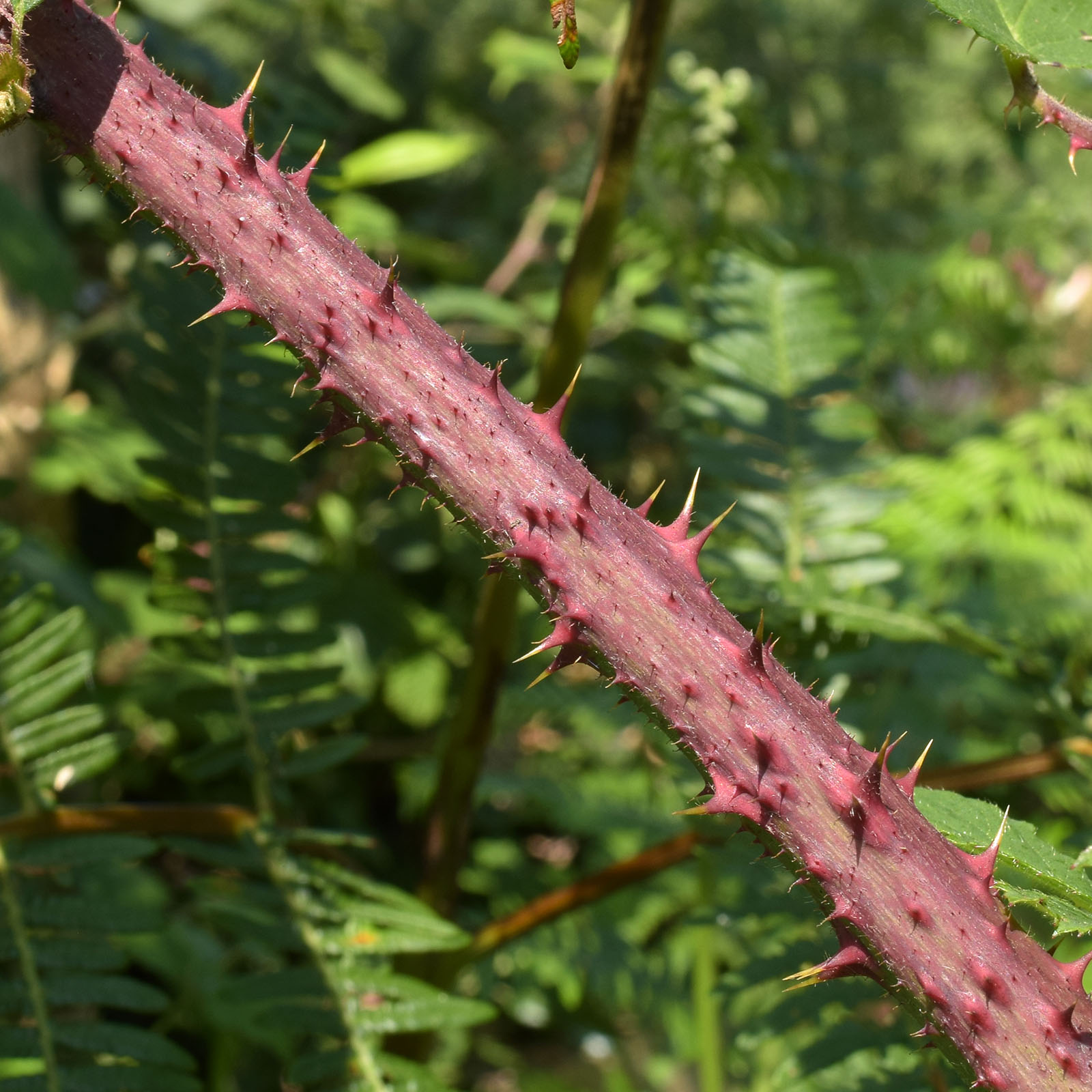
Rubus vindomensis – Series Hystrices
back to Alphabetical index · Taxonomic index
A robust, late-flowering bramble with large panicles, elongated inflorescences and flowers with large, broad white petals and long-pointed sepals. It was first described by David Allen in Watsonia 2004 (Vol. 25, pp. 171-174) and previously listed in the Flora of Hampshire (1996) as 'H568'. In North Hants (VC12) is is recorded from 8 hectads and is abundant in several woods mainly in the east, including Alice Holt Forest. In South Hants (VC11) it may be more scattered, but a large colony at Eastoke Common (now Sandy Point Nature Reserve) was chosen as the type locality. Most of the photographs below were taken at this location in July 2024. David Allen previously believed it to match specimens from Surrey, Sussex and Kent, but later realised that these were different; however, it almost certainly could occur in the neighbouring counties of Surrey and West Sussex. There is an outlying population at Heythrop Park in the Oxfordshire Cotswolds, mentioned in the Watsonia account. It has been recorded on both chalky and acidic soils and often in open situations as well as woodland.

The panicle is very 'open', consisting of the main branch (which may be erect or more usually arched over) and usually only one or two long side branches lower down. All the branches of the rachis diverge at a wide angle and are relatively long, thin and straight. They typically turn a reddish-purple colour when exposed to the sun.

The panicle is leafy below, with usually a single leaflet above, which is often lobed to give a trident shape (see next two photos below).
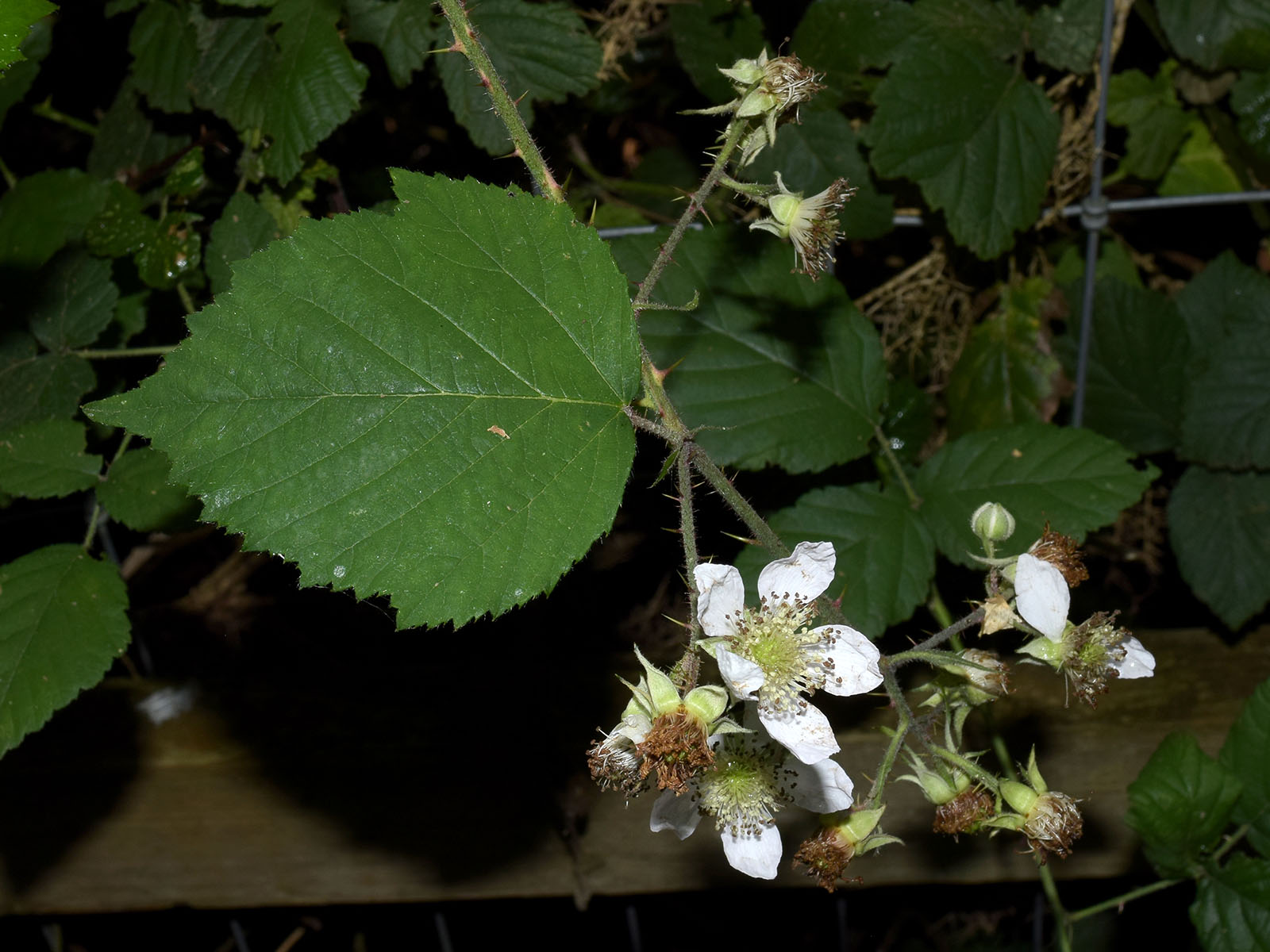
The rachis and pedicels are felted and have numerous red glands which are variable in length. The rachis is usually slightly flexuose.
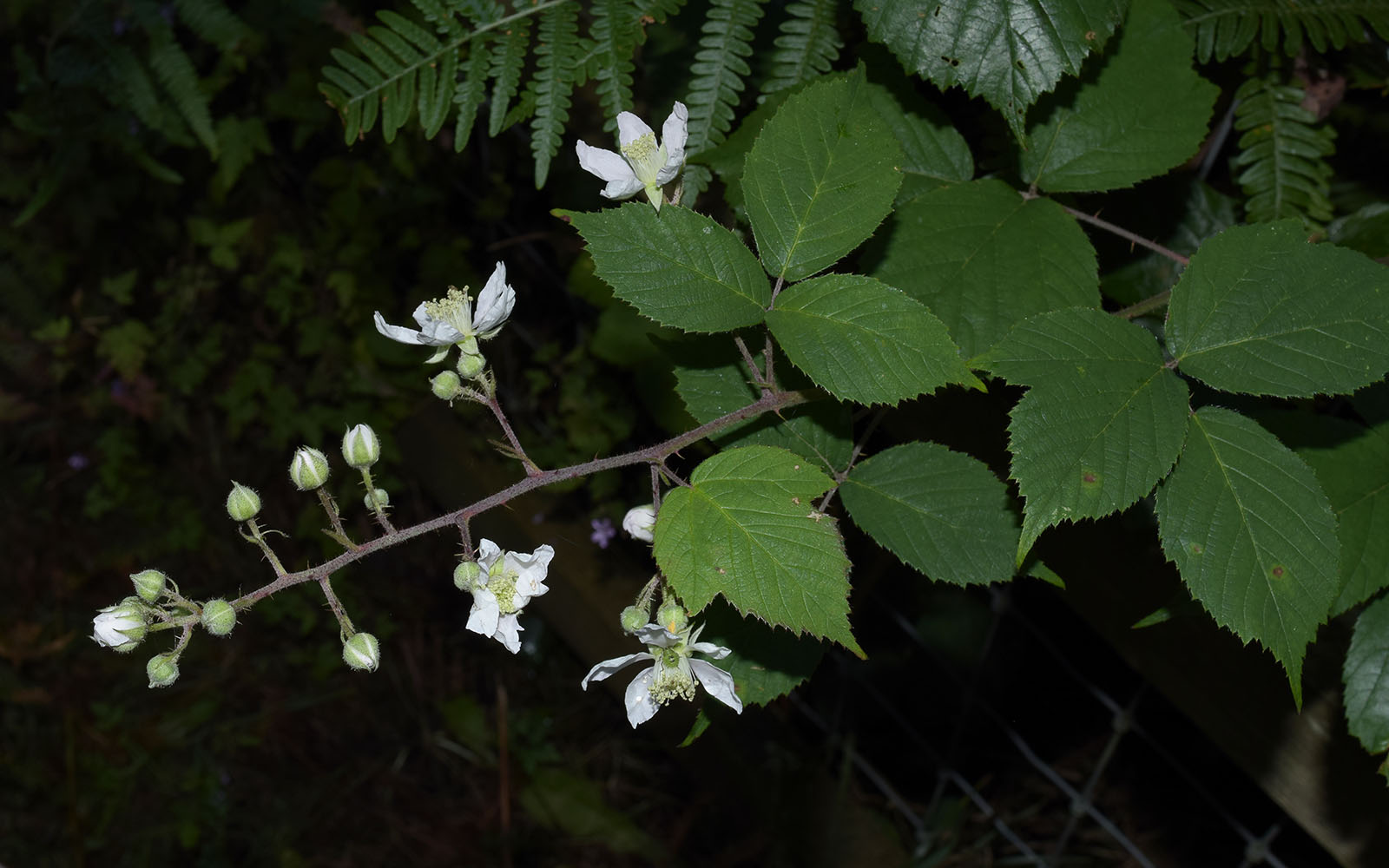
The prickles in the rachis are long, fine and straight, but sometimes distinctly kinked (see those just right of centre). Panicles growing in the shade often have much fewer and weaker prickles (as in the photo above).
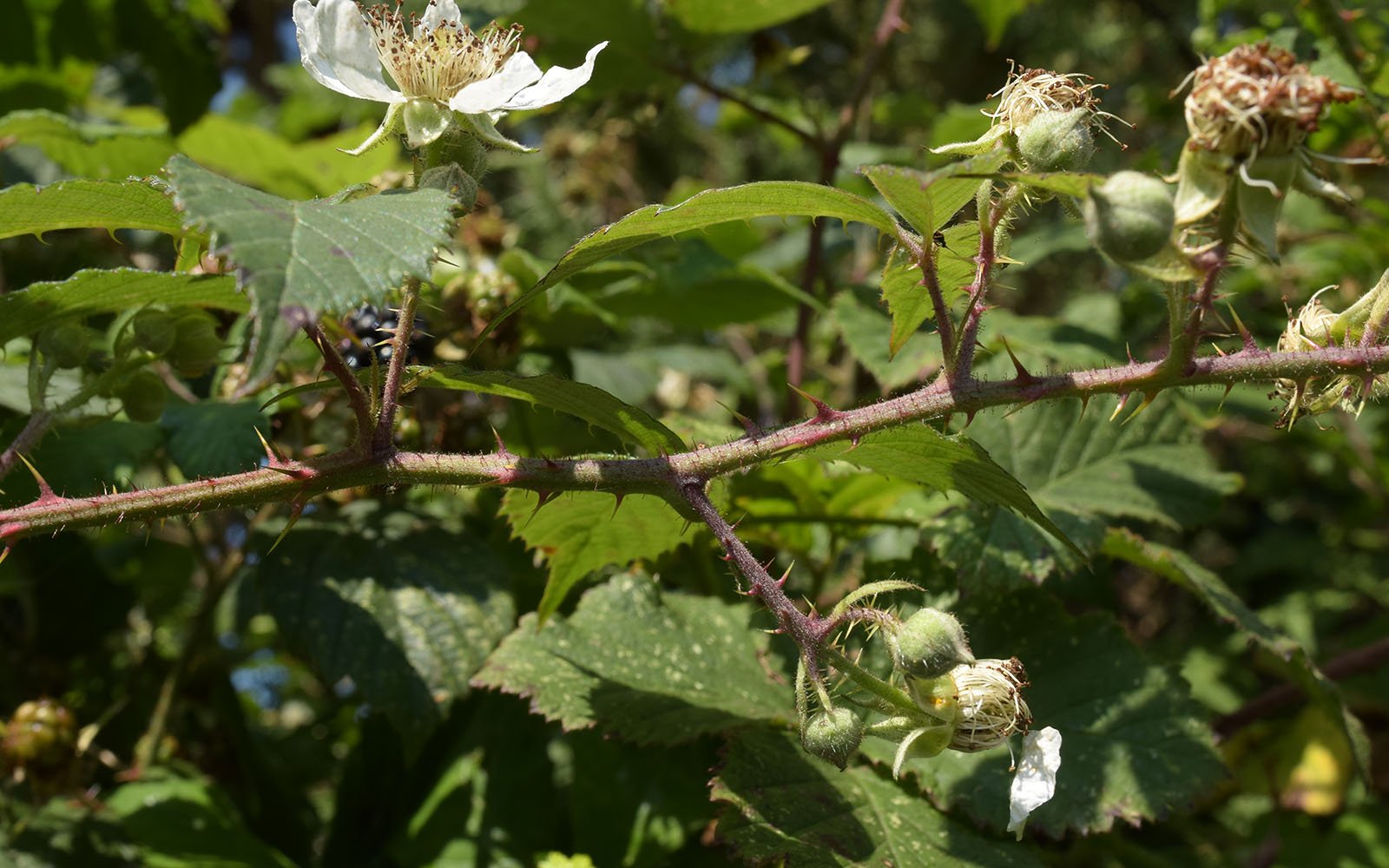
Flowers are relatively large, up to 4cm across, with petals typically 16-20 x 10-12mm. The petal colour appears to be bright white but a hint of pink is sometimes visible in buds or freshly opened flowers.
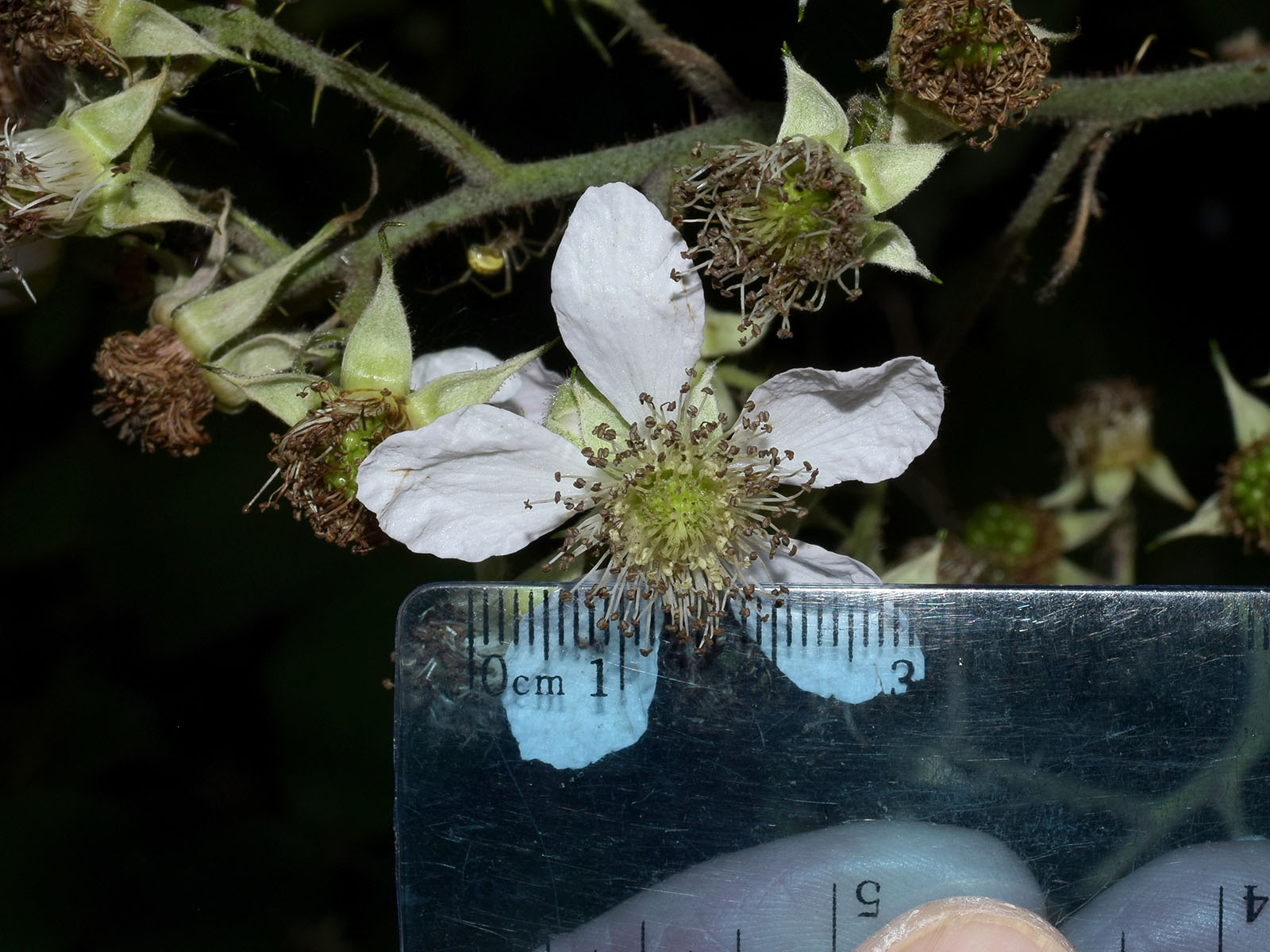
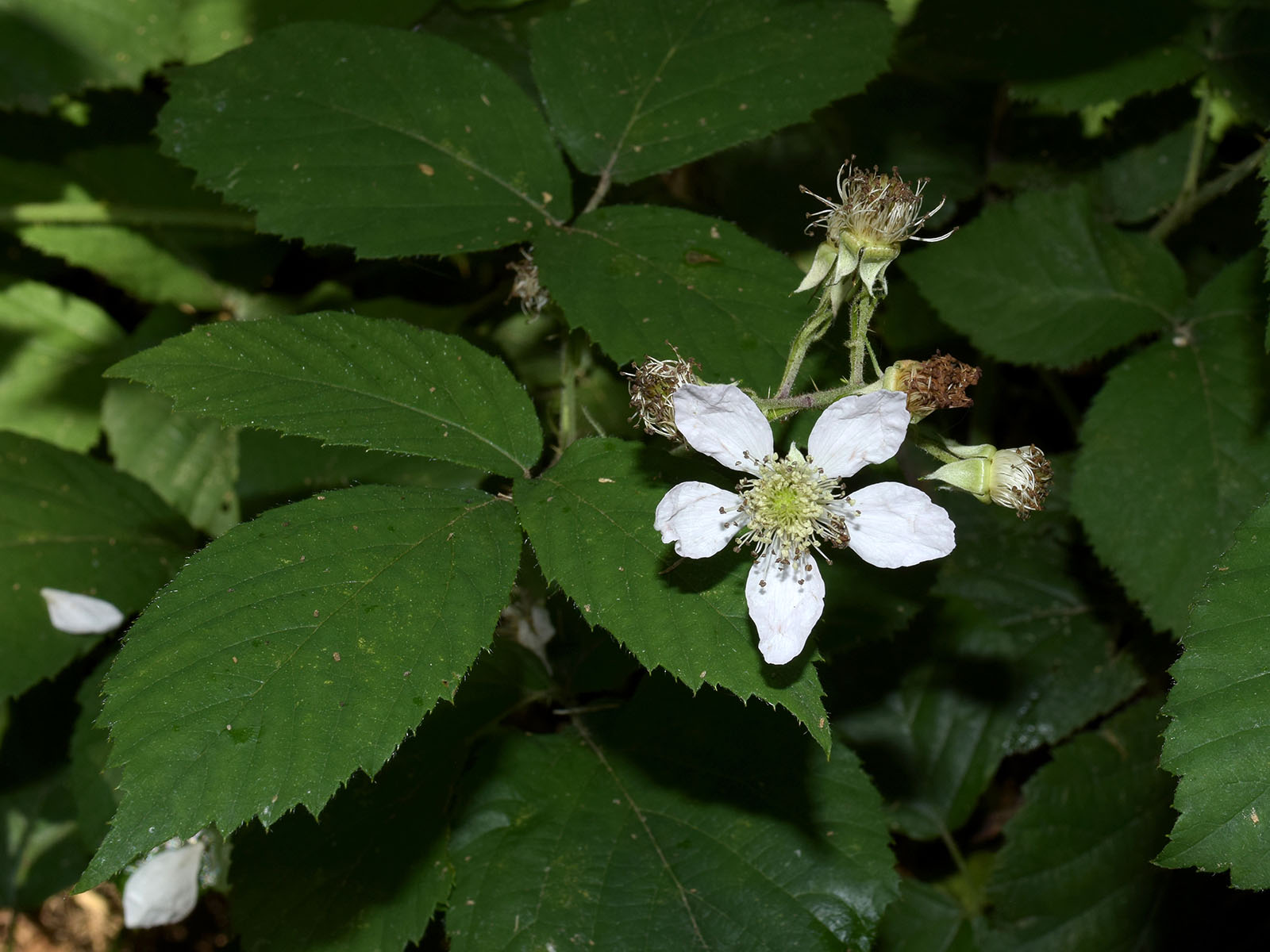
Brambles sometimes have flowers with 6 or 7 petals. This photo was of a plant at the Hayling colony in 2009.
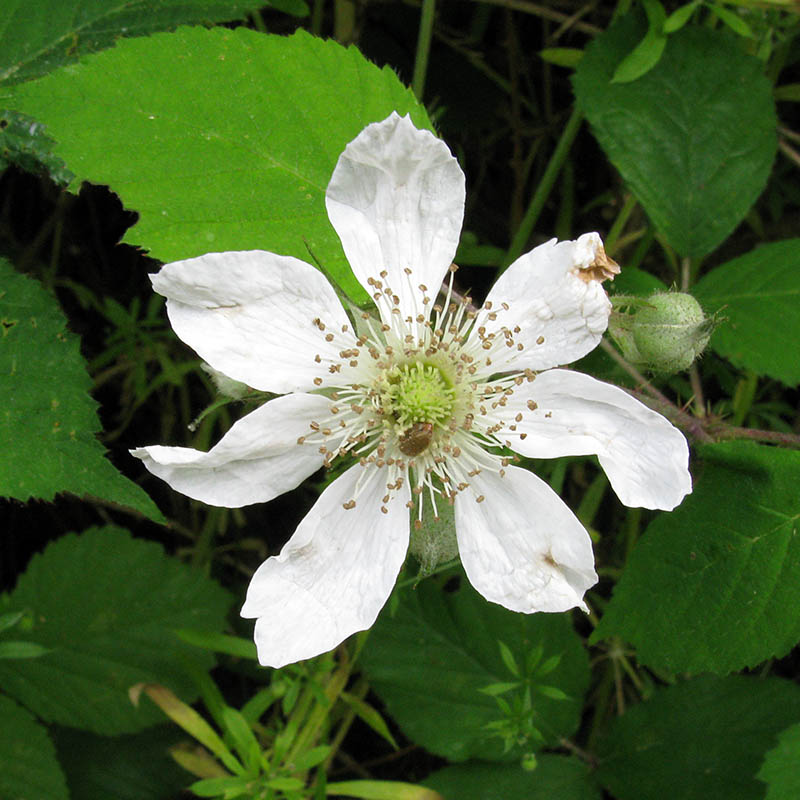
The stamens are relatively long, styles are pale yellow but may be tinged pink. Carpels and the receptacle have long, pilose hairs.
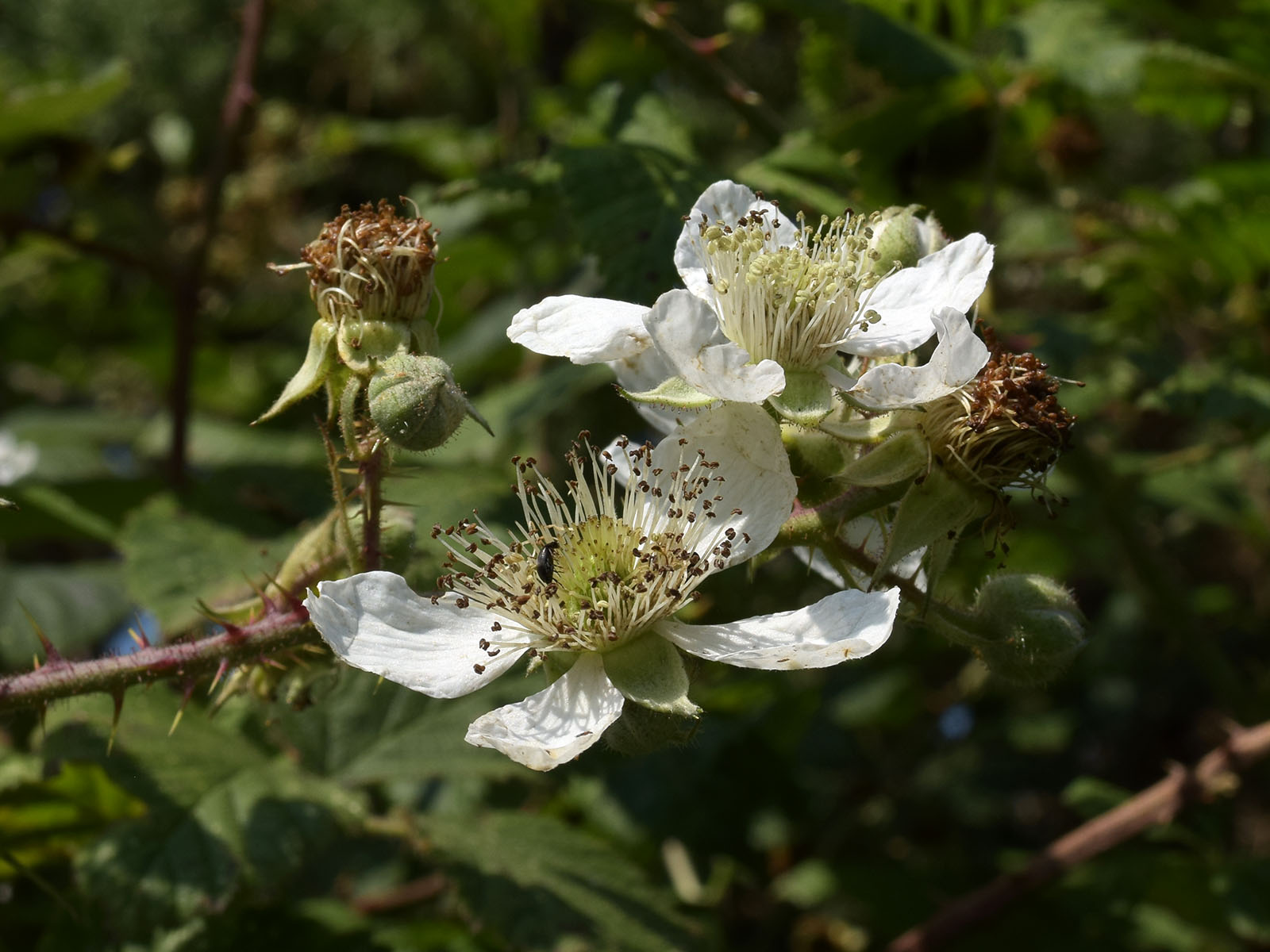
The sepals are felted with short red glands. They have long, fine points, and sometimes develop leafy points. They are loosely reflexed during and after flowering, i.e. with the tips spreading or sometimes upturned.
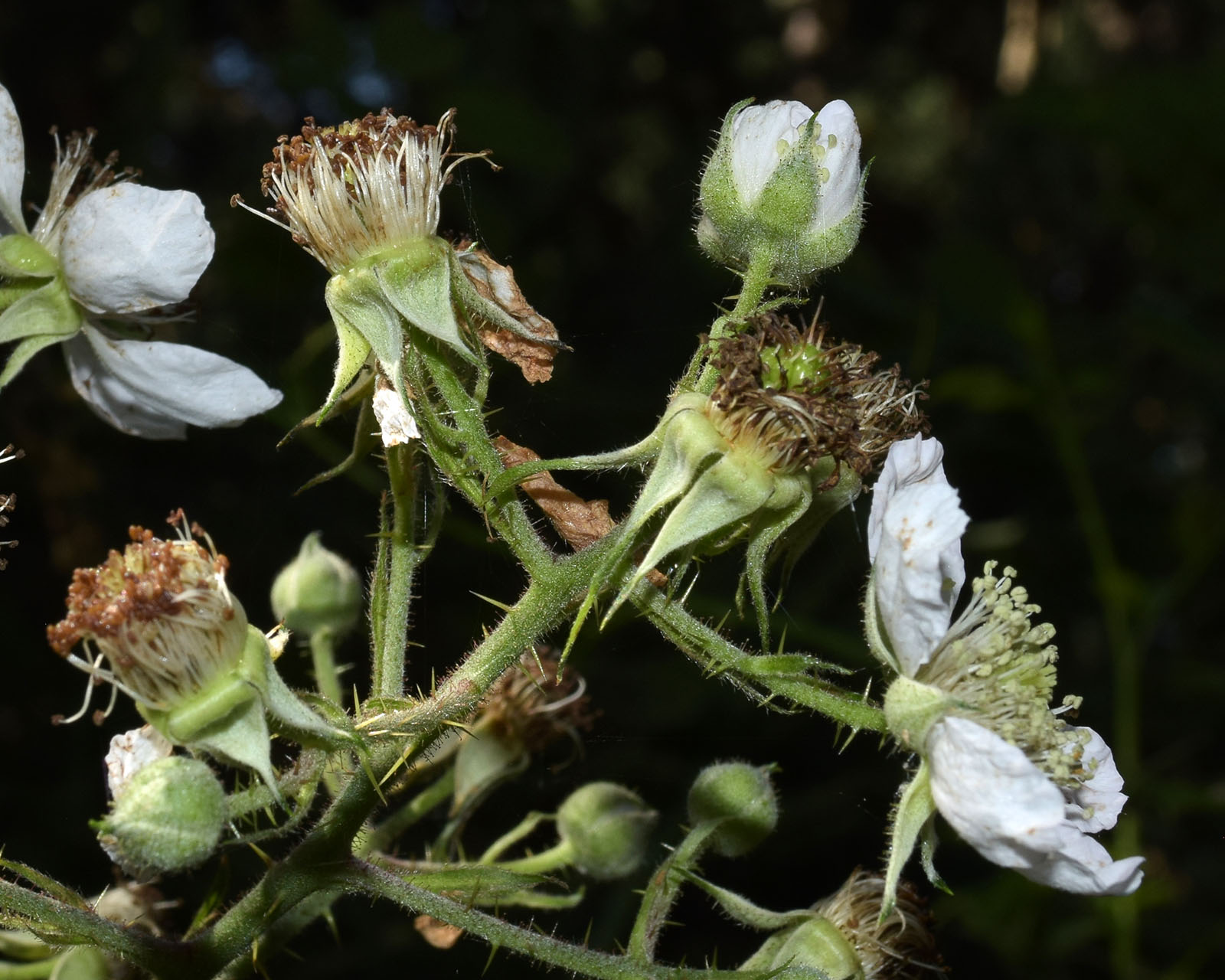

Leaves have five non-overlapping leaflets, which are distinctly bi-serrate and often deeply and sharply so, to give an almost incised appearance. The margins of the leaflets are consequently somewhat undulate. The terminal leaflet is quite large, broadly elliptical to slightly obovate, c.9 x 7cm. In the shade it may become slightly convex, as shown in the two photos below. The long acuminate tip often curves to one side. The base is rounded to emarginate.
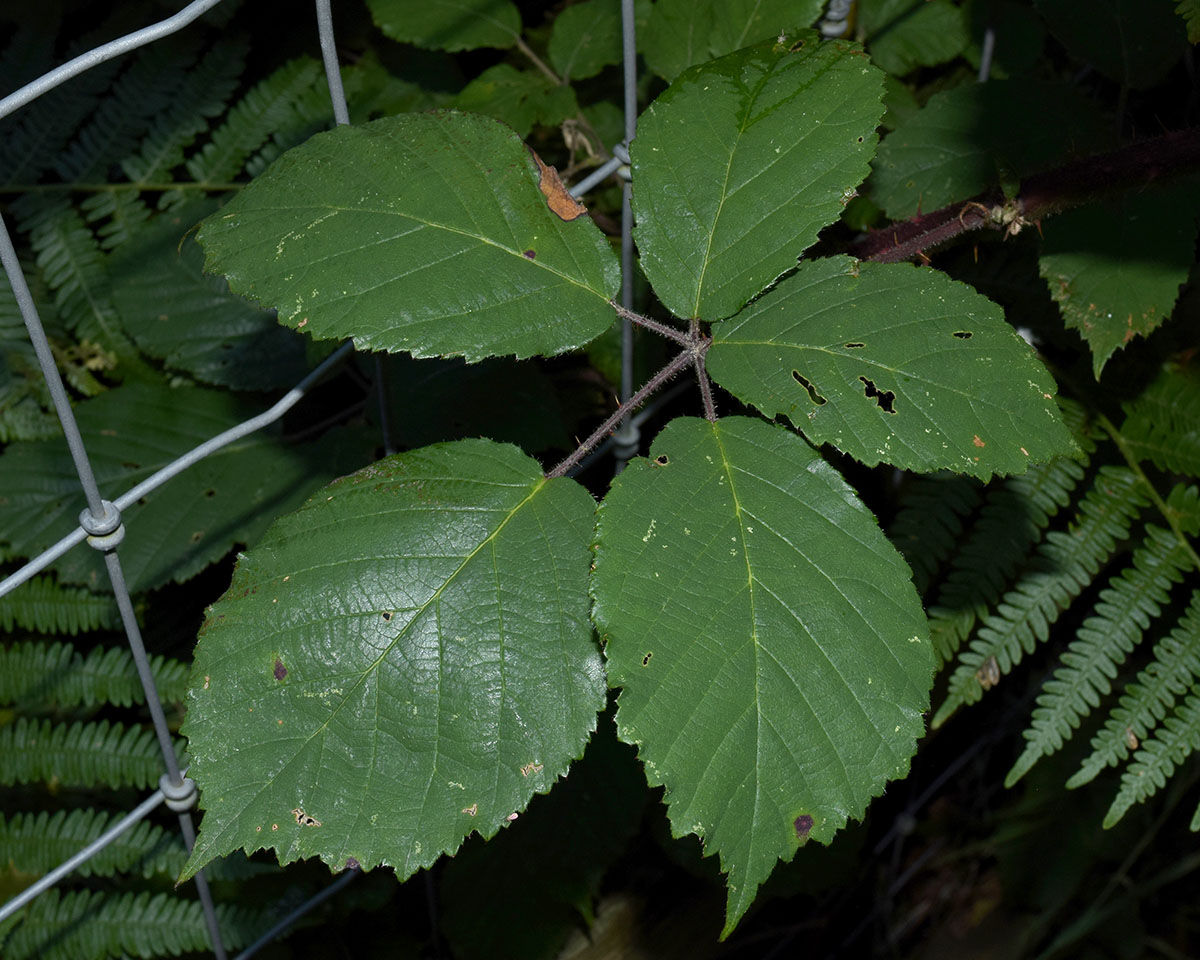
This leaf was photographed near Four Marks, Hampshire in 2012.
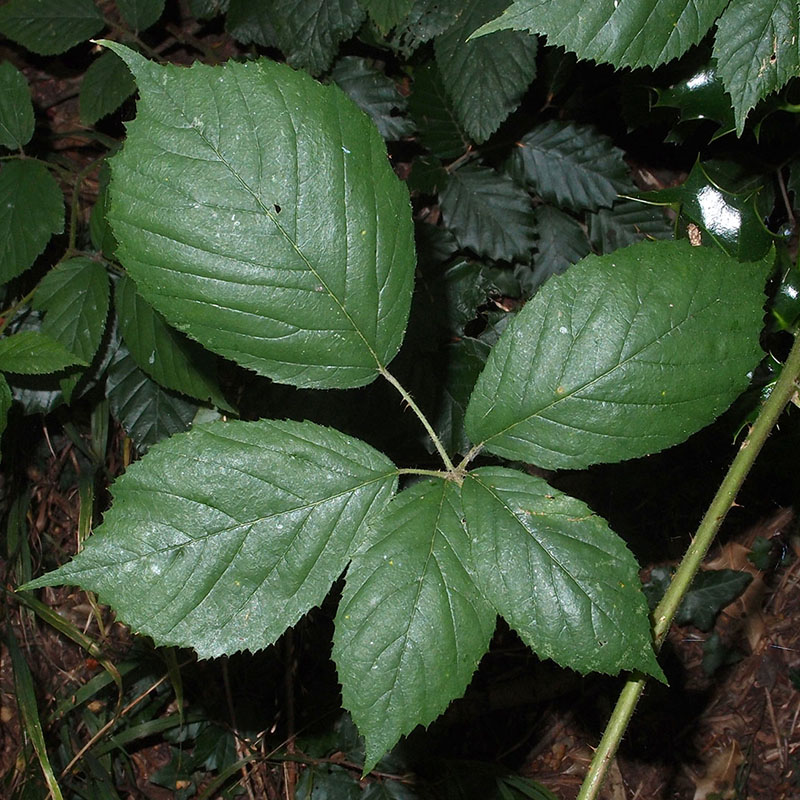
Leaves and stem exposed to strong sunshine.
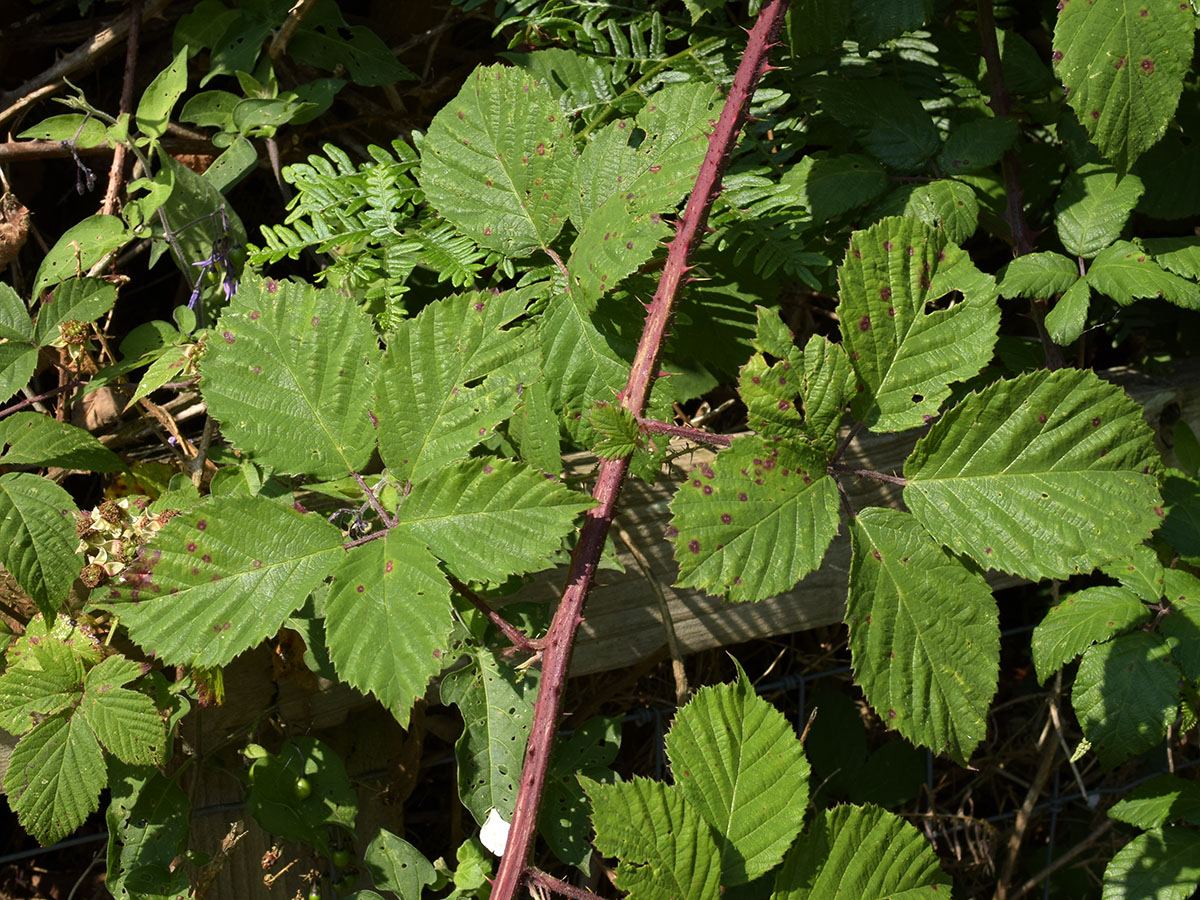
A younger leaf, showing the marginal toothing well. The terminal leaflet on younger leaves is a little narrower in shape.
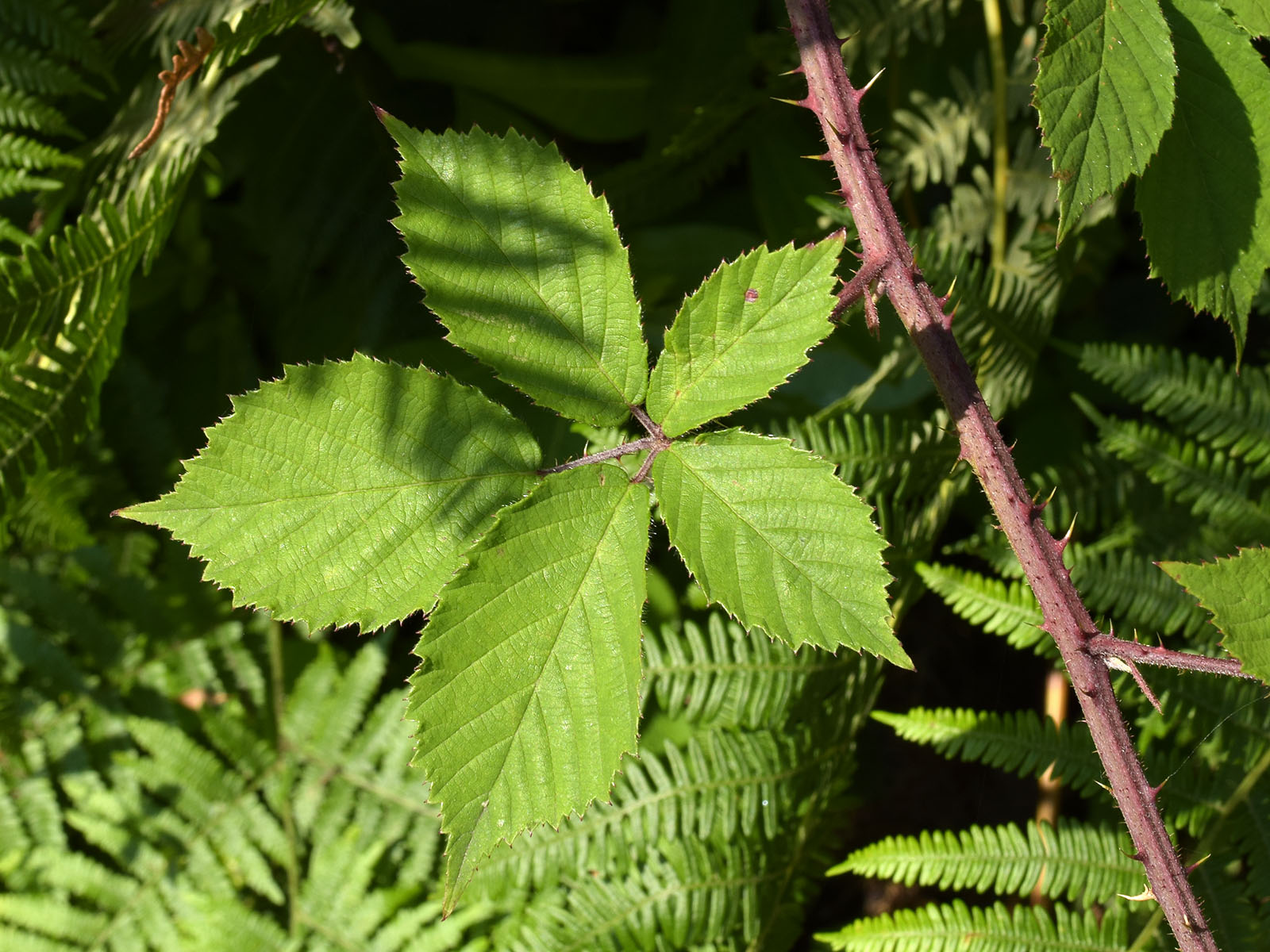
Leaflets are fairly stronlgy felted below; typically a whitish grey colour. This also applies to the leaflets in the panicle.

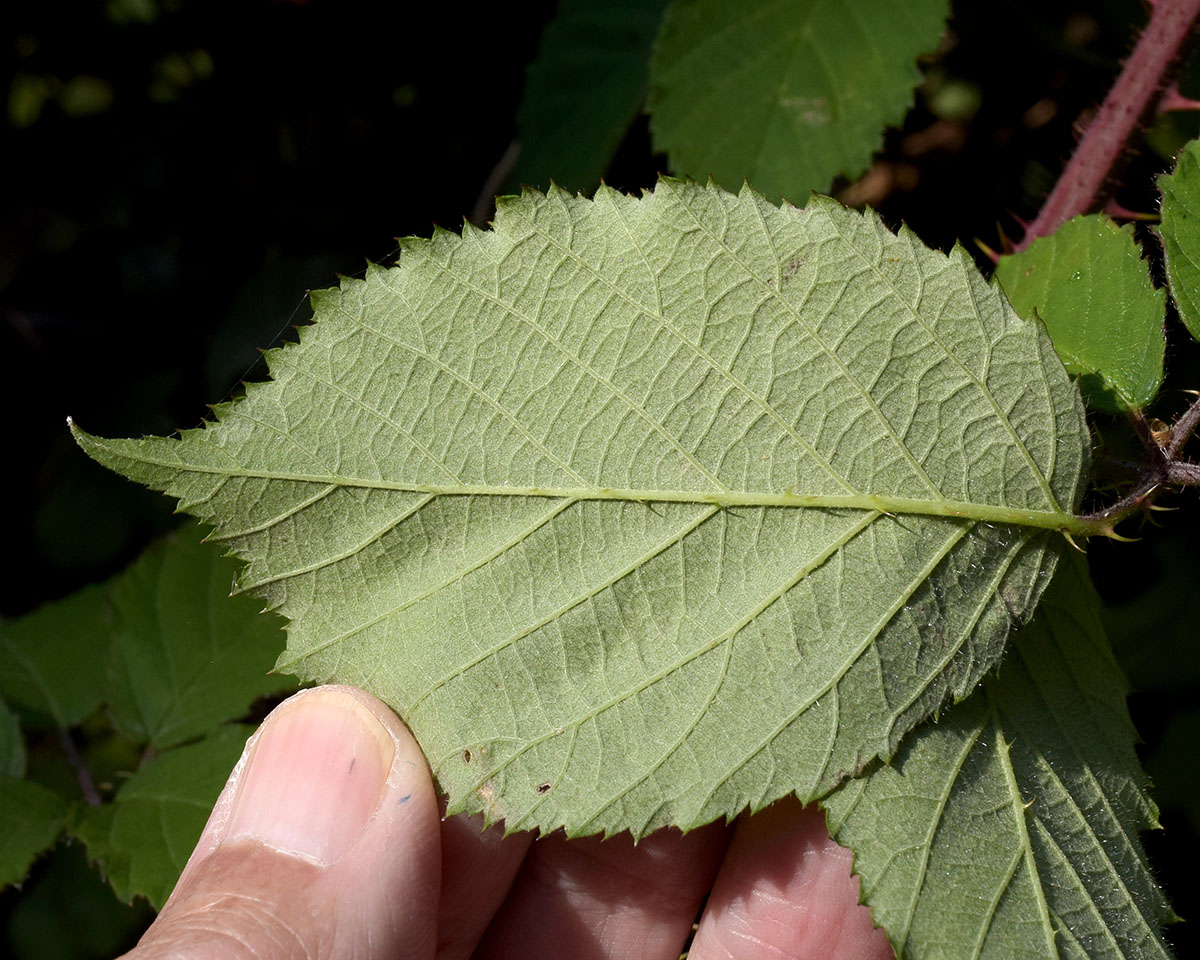
First year stems are bluntly angled, sometimes with furrowed sides, reddish purple in full sun (see also photos above). Main prickles on the angles have red bases and yellow points; they are typically as long or longer than the width of the stem and fairly numerous. There are abundant glands and gland-tipped pricklets of variable sizes all round (but mostly much smaller than the main prickles) and frequent short to medium length hairs - giving a typical Hystrican appearance.
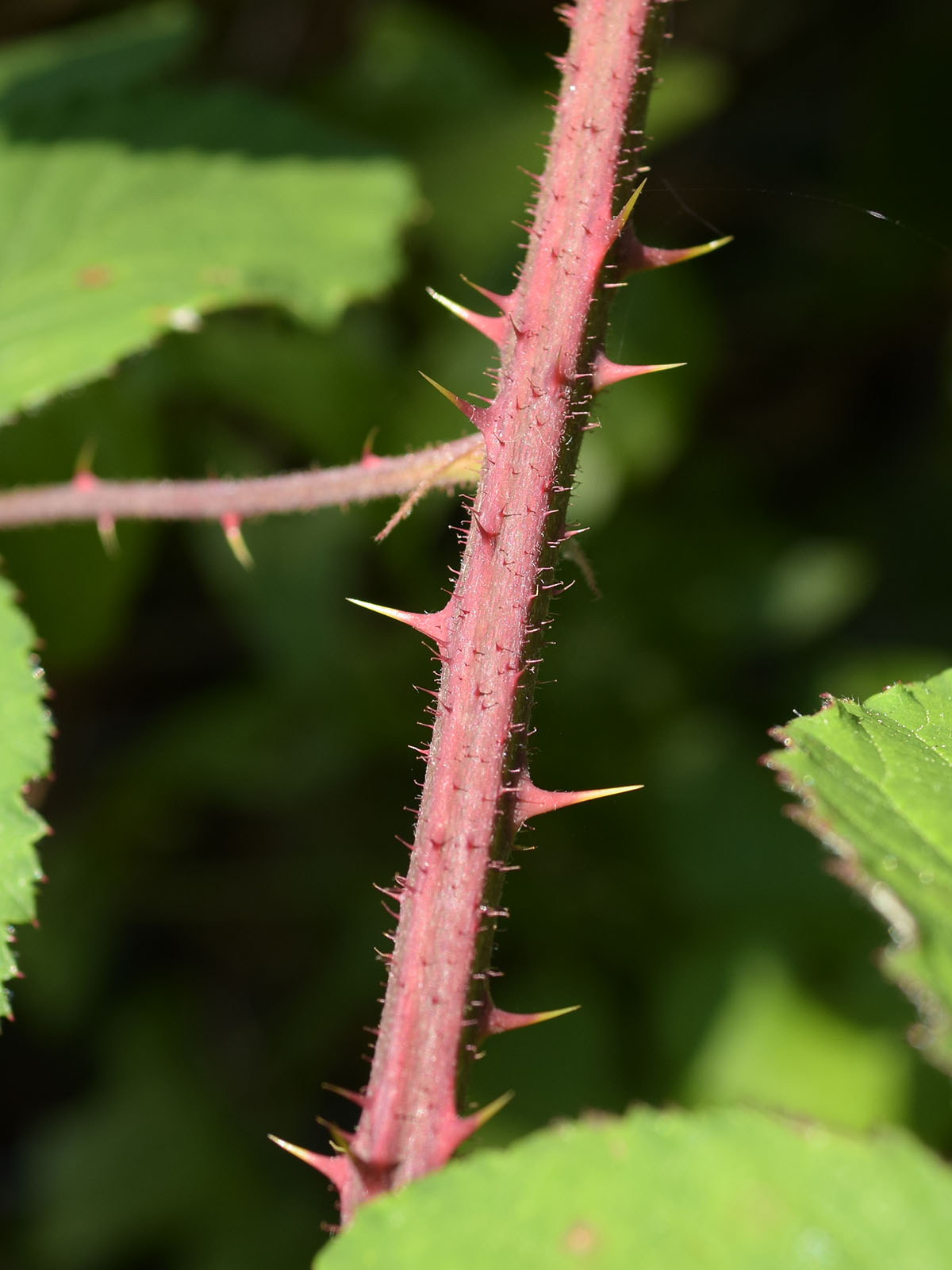

Older stem.
